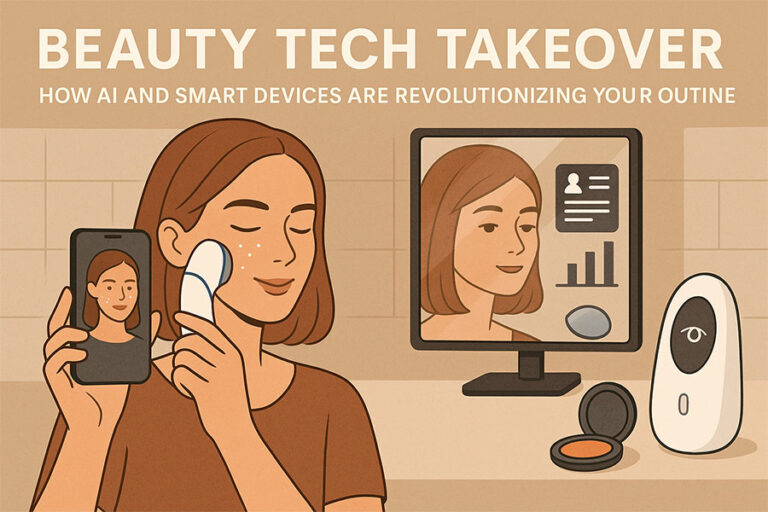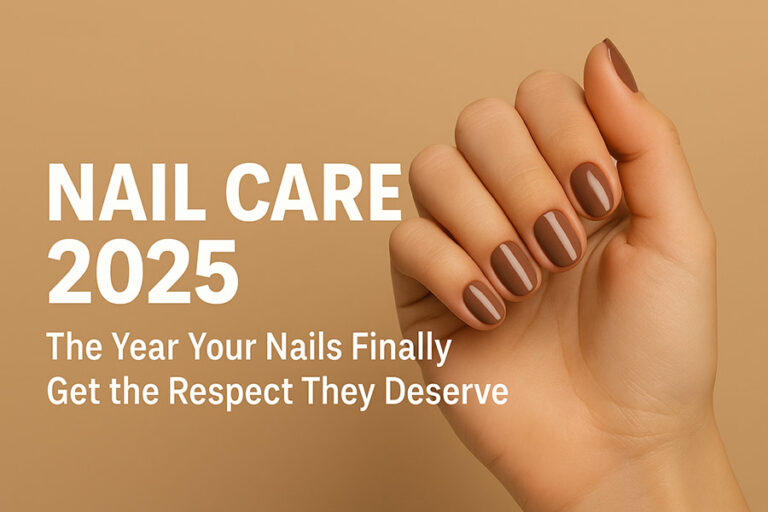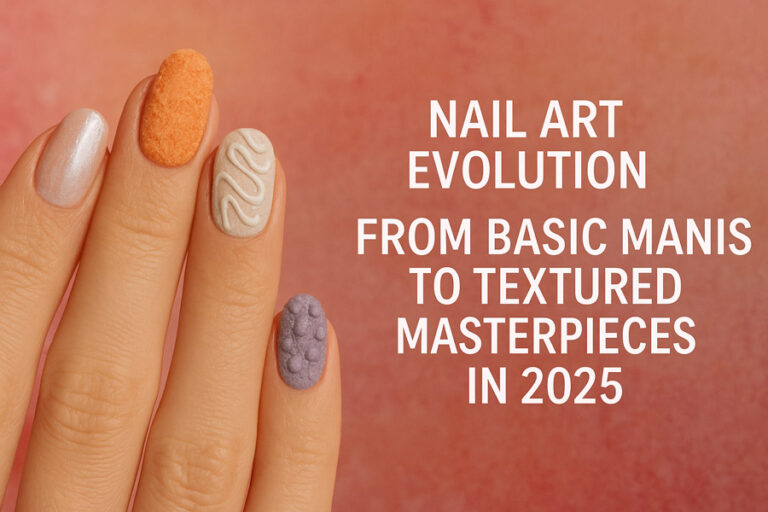Beauty Industry Briefing: 2025 Trends and AI Integration
I. Executive Summary
The beauty industry in 2025 is characterized by a significant shift towards personalization, innovation, and the pervasive integration of Artificial Intelligence (AI) and advanced technologies. Consumers, particularly Millennials and Gen Z, are driving demand for customized solutions, natural-looking enhancements, and sustainable practices. AI is not merely a tool for efficiency but a transformative force reshaping everything from product discovery and development to service delivery and marketing. While promising immense benefits in personalization, speed, and efficiency, the rapid adoption of AI also presents challenges related to cost, training, bias, and regulatory compliance.
II. Emerging Beauty Trends (2025 and Beyond)
A. Eyelash Trends
- Color and Brown Lashes: A notable “surge in colored lashes, moving beyond basic black” is expected, including “subtle ombre effects.” Brown lashes, popular in 2024 for their natural look, will remain a “hot” trend in 2025.
- Textured & Wispy Lashes: The emphasis is on “natural-looking volume and dimension,” achieved through “varying lengths and curls within a single set,” mimicking natural growth patterns.
- Flat/Cashmere Lashes: These are lauded for “comfort and longevity,” with a “flat base [that] provides a larger bonding surface, resulting in better adhesion and a softer feel.” Lii Lash’s Cashmere Silk, with a thickness of 0.02mm, is highlighted for volume and mega-volume applications.
- Advanced Magnetic Lash Technology: Improvements include “thinner bands, stronger magnets, and more natural-looking styles.”
- Next-Gen Lash Growth Serums: Advancements in peptide technology are leading to “more effective lash growth serums” that promote “length, thickness, and overall health.”
B. Skin Care and Exfoliation Trends
- Dermabrasion 2.0: The next generation of dermabrasion focuses on “enhanced precision, customization, and efficacy.” This includes:
- Microdermabrasion: Uses fine crystals for less invasive exfoliation.
- Hydradermabrasion: Combines dermabrasion with hydrating serums.
- Laser-Assisted Dermabrasion: Incorporates laser technology for precision.
- Chemical Peels as Complement: Chemical peels are used in conjunction with dermabrasion for “additional layer of exfoliation,” addressing “hyperpigmentation and acne,” and “enhancing skin penetration of topical treatments.” New formulations include Glycolic, Salicylic, and TCA peels.
- Microneedling Revolution: This technique continues to evolve, focusing on:
- Revolutionizing Needle Design: Modern needles are “ultra-fine yet robust,” allowing for customization based on skin types and concerns, minimizing trauma, and enhancing comfort.
- Automated Precision: Devices deliver “consistent and accurate needle penetration,” making treatments “faster and more efficient.”
- Therapeutic Applications: Microneedling is expanding “beyond aesthetic applications into therapeutic realms,” such as scar treatment and hair regeneration, and shows promise in medicine delivery through “patches [that] use tiny needles to deliver medication directly into the skin.”
- Next-Gen Serums & Nanotechnology: Serums are designed for “deep penetration” thanks to micro-channels, boosting collagen and accelerating healing. “Nanotechnology is poised to revolutionize” skincare by using nanoparticles for “targeted delivery” and “controlled release of ingredients.”
C. General Beauty Industry Shifts
- Sustainability: Growing demand for “sustainable lash materials and adhesives” and eco-friendly packaging made from “plant-based fibers and biodegradable materials.” Lii Lash is a “go-green brand,” using “100% paper packaging” and being cruelty-free.
- Natural Glam: Millennials and Gen Z favor “natural-looking enhancements that accentuate their features rather than creating a dramatic artificial look.”
- DIY & Customization: A “thriving” DIY culture, driven by online tutorials and at-home kits, demands “customizable options.”
- Self-Expression: Lashes are seen as a “form of self-expression, allowing individuals to showcase their unique style and personality.”
- Customizable Eyelash Designs: “Personalization is key in 2025.” This involves “Advanced Lash Mapping” and “Hybrid Lash Techniques” to tailor looks to individual eye shapes and features.
III. AI and Technology Transformation in Beauty
A. AI’s Pervasive Impact
- Market Growth: The CAGR of AI in the beauty industry from 2021 to 2027 is expected to be 33.2%. AI could add “$9 billion to $10 billion to the global economy” based on its impact on the beauty industry alone.
- Efficiency and Customer Satisfaction: AI-powered technology is making businesses “more efficient and your clients happier.”
- Automation of Routine Tasks: AI is automating booking, marketing, data crunching, and potentially “lash extensions, simple color refreshes, and maybe even blow-drys” by “precision bots under human oversight.”
B. Key AI Use Cases in Beauty
- Hyperpersonalized Targeting: AI analyzes large consumer data sets to create “microsegments” and “hyperpersonalized marketing messages,” which could “improve conversion rates by up to 40 percent.” This includes dynamic “clienteling” for retail associates and tailored offers.
- Experiential Product Discovery:AI-powered chatbots: Next-generation chatbots (LLMs) can respond to a “wider variety of questions and offer more personalized recommendations,” improving conversion rates.
- Virtual Try-On Tools: AI-powered augmented reality (AR) tools allow users to “visualize different lash styles on your own face” or “see the look of different products on their skin in different settings or see the potential benefits a product could have to their appearance over time.”
- In-store interactive displays: Gen AI can “generate content personalized to that consumer based on customer profile and purchase history.”
- Rapid Packaging-Concept Development: Gen AI can “dramatically accelerate” packaging design by generating options based on prompts and consumer preferences, potentially reducing concept development time by 60%.
- Innovative Product Development: AI can “speed up” the multiyear process of creating new formulas by identifying ingredients, predicting benefits, and recommending recipes, potentially saving up to 5% on raw materials and reducing research time from weeks to days.
- AI-Driven Customization (Skin Care): AI algorithms perform in-depth skin analysis, “evaluating factors such as skin texture, pore size, underlying scar tissue, and overall skin health,” to predict and tailor “the most effective treatment plan for each individual.”
- Self-Service Skin Scans: Kiosks in lobbies will allow clients to “DIY their skin diagnostics” before booking, requiring experts to “position yourself as the interpreter of cold data.”
- At-Home AI Extensions: The rise of smart mirrors and bespoke serums enables clients to “DIY treatments between salon visits,” necessitating subscription memberships that blend in-salon and remote check-ins.
- Virtual Consultations: Clients will increasingly expect “slick AR demos” before services.
- Data-Driven Trend Forecasts: AI can “scrub social media and search data to predict the next viral cut or color.”
- Robotic Service Delivery:LUUM Lash: The “first AI tool used to innovate the process of eyelash extensions,” described as safer and more accurate than human application. It aims to reduce application time significantly, with the next machine projected to be “three to four times faster than humans.”
- 10Beauty: Developed the “world’s first full salon-quality manicure machine” that performs multiple steps from polish removal to drying, emphasizing safety with a “blade-free machine.”
- Gemma Robotics: Plans to launch the “world’s first autonomous makeup application machine,” allowing artists to “reach and empower countless women across the globe” with signature makeup looks.
C. Examples of AI Adoption
- L’Oréal’s Cell BioPrint Device (2025 CES): This device offers “ultra-personalized insights based on specific protein levels in your skin” to predict skin aging, recommend active ingredients, and identify potential issues like dark spots. It uses a “facial tape strip” to collect a sample for protein analysis and suggests L’Oréal brand products.
- Perfect Corp’s Skincare Pro: Can “diagnose a laundry list of skin issues in seconds, then spit out personalized treatment protocols.”
- Estée Lauder’s Virtual Makeup Assistant: Streamlines the makeup application process.
- Sephora Virtual Artist and GlamScout: AI-driven tools for virtual makeup applications and product recommendations.
IV. Challenges and Survival Strategies for Beauty Professionals
A. Challenges
- Sticker Shock: Cutting-edge AI technology comes with “eye-watering price tags.”
- Learning Pains: Not all professionals are “mini-coders,” requiring significant training to wrangle new platforms.
- Bias & Inclusivity: “Early skin-analysis AIs often trip over darker or mixed skin tones,” necessitating protocols to “catch and correct misreads.”
- Client Skepticism: Some clients may “recoil at ‘robots touching my face,'” requiring “jargon-free demos and empathy.”
- Regulatory Snarls: As beauty tech blurs into “medical territory,” compliance with evolving regulations becomes crucial.
B. Survival Strategies for Professionals
- Upskill Like a Maniac: Learn AR/AI tools to become proficient in their use and demonstration.
- Blend High-Tech with High-Touch: Integrate AI diagnostics with personalized human services, maintaining the “irreplaceable human connection.”
- Explode Your Personal Brand: Use AI for hyper-personalized marketing and leverage unique personality to close sales.
- Champion Data Ethics: Safeguard sensitive client data to maintain trust.
- Build a Futurist Community: Host in-salon AI demos and invite clients to beta-test new gadgets to become a “salon on the bleeding edge of beauty tech.”
- Continuous Professional Development: For lash technicians, “continuous professional development is essential” to stay updated on techniques and products.
- Client Consultation: Open communication with clients is crucial to understanding preferences and delivering on-trend results.
- Embracing Innovation: Be open to “trying new products, techniques, and styles,” including new technologies like “Hollow technology” and “laser technology” for lash extensions.
V. Conclusion
The beauty industry is undergoing a rapid, AI-driven transformation, shifting towards highly personalized, efficient, and technologically advanced experiences. While this presents significant opportunities for innovation, business growth, and enhanced consumer satisfaction, it also demands proactive adaptation from beauty professionals and businesses. The future of beauty hinges on effectively integrating these new technologies while retaining the human element of artistry and personal connection.



